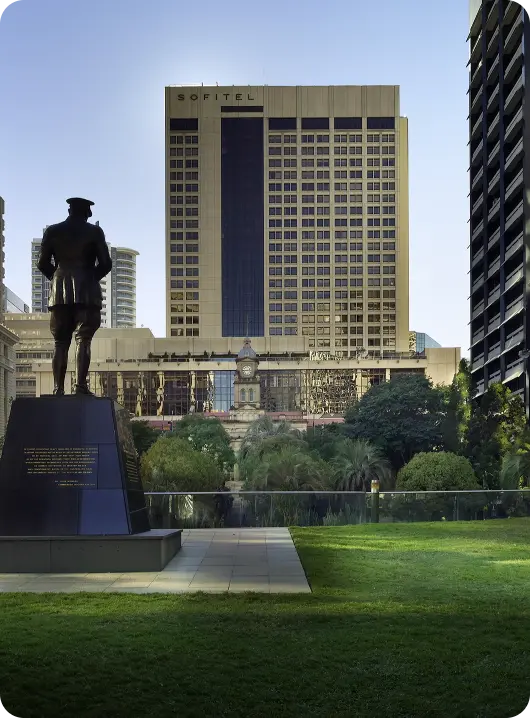Prudence Marzinotto
Your PDF Menu Is Killing Your Local SEO and Your Bookings
If you’re treating your restaurant or bar menu as nothing more than a list of what you serve, you’re leaving money, traffic, and bookings on the table.
In 2025, your menu isn’t just a tool for hungry patrons. It’s a hyper-relevant local SEO asset that can directly drive visibility, online bookings, foot traffic, and even repeat business. But here’s the catch: most hospitality businesses either don’t know this, or they’re getting it wrong.
Let’s talk about what your menu is in the era of AI-powered search, and how to flip it from passive PDF into a dynamic, revenue-generating machine.
1. Let’s Get Real: Most Menus Are Invisible Online
When was the last time you searched for a dish on Google and ended up on a restaurant’s website?
Chances are you clicked on Uber Eats, menumodo, or OpenTable, platforms with bigger SEO muscles and better content structures. That means your brand gets buried while third-party sites rake in the traffic, data, and bookings.
Here’s what’s wild:
- 88% of diners look up a restaurant online before visiting (Zagat)
- 70% of mobile searches for food result in action within an hour (Google)
- nd yet, over 60% of restaurant websites still use PDF menus (BrightLocal)
PDFs are SEO black holes. Google can’t easily crawl them. AI search engines (like ChatGPT or Perplexity) can’t pull relevant snippets. Your delicious offerings sit in the dark, unnoticed.
2. AI Search Is Eating the Internet and Menus Are Prime Real Estate
Search isn’t what it used to be. It’s no longer just keywords and blue links. It’s conversational, intent-driven, and AI-powered. Here’s how that affects you:
Imagine someone in your area asks ChatGPT:
“Where can I get a duck leg confit with crispy skin and orange glaze in Adelaide?”
If your menu lives as plain text on your site and uses those descriptors, you’re eligible to show up in the AI-generated answer. If it’s locked in a PDF or image, you’re invisible.
This is Answer Engine Optimisation (AEO) in action, where content is structured to be discoverable, extractable, and relevant to conversational AI.
Your menu is one of the most naturally semantic-rich pieces of content on your site. It’s loaded with:
- Product names
- Descriptive phrases
- Location signals
- Occasion keywords (e.g., “Happy Hour”, “Pre-Theatre Menu”, “Weekend Brunch”)
If you optimise it right, it can signal exactly what customers are searching for and position your venue as the local authority.
3. The Strategic Shift: From Menu to Micro-Landing Pages
Here’s where we flip the script.
Instead of uploading a single menu PDF and calling it a day, imagine creating:
- A “Cocktail Menu” page with individual cocktails listed, complete with flavour profiles and occasion tags.
- A “Dinner Menu” page that not only lists items but also includes internal links to signature dish pages.
- A seasonal “Truffle Month” landing page describing the dishes, the story behind the ingredients, and why it’s exclusive.
Now your menu becomes a cluster of SEO entry points. Each page is a net cast out into local and AI-powered search.
Let’s quantify that:
Businesses that switch from PDFs to structured menu pages see up to 47% increase in organic traffic to menu-related pages within 90 days (SEMRush case study, 2024). It’s not just traffic. This leads to:
- Higher time-on-site
- More direct bookings
- Increased voucher purchases (especially when menus tie into events or seasonal experiences)
4. Add Schema Markup or Get Skipped in AI Results
If you want your menu to rank and show up in Google or AI answers, you need structured data, also known as schema markup.
Think of schema like giving Google a backstage pass to your content. It lets search engines “understand” your menu the way a human would:
- Which dishes are entrées vs. mains.
- Whether a wine is vegan-friendly.
- Which items are gluten-free or locally sourced.
- What time your happy hour runs.
Schema also powers rich snippets, which means your dish might show up with a star rating, price, or description directly in search before a customer even clicks.
Menus optimised with structured data have a 30% higher likelihood of appearing in AI-generated answers compared to unstructured content (Moz AI Study, Q1 2025).
5. Subjective Wins: Menus That Tell a Story Convert Better
Let’s shift gears from technical to emotional. Menus are a moment of hospitality.
They’re an invitation to an experience, not just a transaction.
Ask yourself:
- What’s the story behind your dishes?
- Who’s the chef? What’s their ethos?
- Why was that sourdough fermented for 48 hours?
Google and AI eat that up too, especially when it’s tied to location and emotion.
The Takeaway: Turn Your Menu Into a Marketing Engine
Let’s recap how to weaponise your menu for local SEO and AI discovery:
Ditch PDFs — Use clean, crawlable pages.
Break out content — Create landing pages by menu type, occasion, or dish category.
Use descriptive keywords — Think like your customers search.
Add schema markup — Give Google and ChatGPT structure to work with.
Tell your story — Make your menu emotionally resonant, not just transactional.
Update regularly — Signal freshness to search engines with seasonal menus, new items, and featured specials.
From Menu to Magnet: It’s Time to Get Found
Your menu isn’t just what you serve, it’s how the world finds you.
In the age of AI-powered search, voice assistants, and instant recommendations, the way your menu shows up online determines whether you’re seen, booked, and remembered or skipped over for someone else.
This isn’t just about ticking an SEO box. It’s a mindset shift: from thinking of your menu as a static asset to treating it like a living, discoverable experience that works as hard as your team does.
You’ve already poured craft, creativity, and care into every item that leaves the kitchen or bar. Don’t let that effort disappear into a PDF file no one ever finds. Make your menu do what it was always meant to do, spark curiosity, drive action, and bring people to your door.
If a potential guest searched for your signature dish or standout cocktail right now, would you show up? Let’s chat more about how to optimise your hotels’ restaurant or bar’s digital presence.

Prudence Marzinotto

Proof That
Microsites Work.
$1,272,760
Achieved in 12-months.

JULIA DEVITA
Director of Sales
Sofitel Brisbane Central